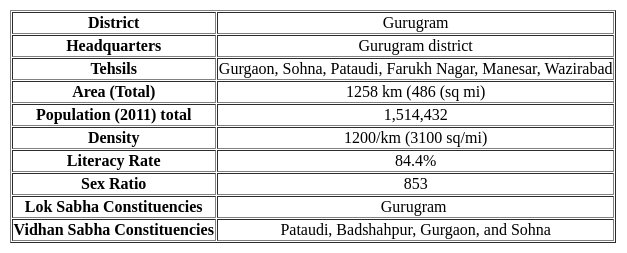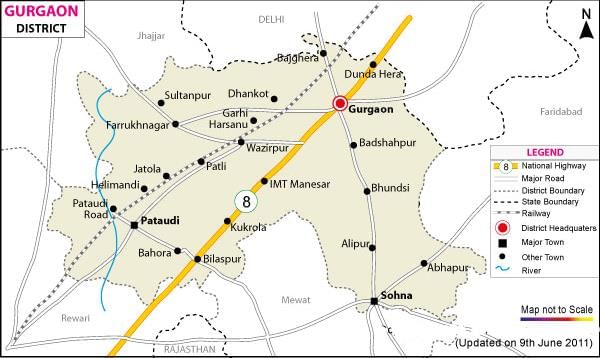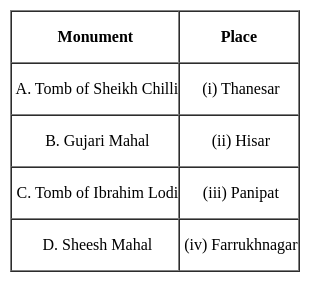Software Development Exam > Software Development Tests > Test: Medieval History of Haryana - Software Development MCQ
Test: Medieval History of Haryana - Software Development MCQ
Test Description
20 Questions MCQ Test - Test: Medieval History of Haryana
Test: Medieval History of Haryana for Software Development 2025 is part of Software Development preparation. The Test: Medieval History of Haryana questions and answers have been prepared
according to the Software Development exam syllabus.The Test: Medieval History of Haryana MCQs are made for Software Development 2025 Exam.
Find important definitions, questions, notes, meanings, examples, exercises, MCQs and online tests for Test: Medieval History of Haryana below.
Solutions of Test: Medieval History of Haryana questions in English are available as part of our course for Software Development & Test: Medieval History of Haryana solutions in
Hindi for Software Development course.
Download more important topics, notes, lectures and mock test series for Software Development Exam by signing up for free. Attempt Test: Medieval History of Haryana | 20 questions in 20 minutes | Mock test for Software Development preparation | Free important questions MCQ to study for Software Development Exam | Download free PDF with solutions
Detailed Solution for Test: Medieval History of Haryana - Question 1
Test: Medieval History of Haryana - Question 2
Which of the following mosque in Rohtak which was previously a temple was turned into a mosque during the reign of Aurangzeb?
Detailed Solution for Test: Medieval History of Haryana - Question 2
Test: Medieval History of Haryana - Question 3
At Fatehabad in the courtyard of the tomb, which of the following Sufi saint's inscription of Mughal emperor Humayun is engraved on a stone?
Detailed Solution for Test: Medieval History of Haryana - Question 3
Test: Medieval History of Haryana - Question 4
The pattern on the walls of the Palace of Maharaja Tej Singh were taken from which epic?
Detailed Solution for Test: Medieval History of Haryana - Question 4
Detailed Solution for Test: Medieval History of Haryana - Question 5
Test: Medieval History of Haryana - Question 6
Who had built the Krishna-Arjuna Rath (Chariot) and the temple of Shankaracharya near the Jyotishwar Sarovar situated in district Kurukshetra
Detailed Solution for Test: Medieval History of Haryana - Question 6
Test: Medieval History of Haryana - Question 7
Which of the following district of Haryana state is having famous Humayun Mosque?
Detailed Solution for Test: Medieval History of Haryana - Question 7
Test: Medieval History of Haryana - Question 8
In which century Firoz Shah Tughlaq founded the city of Fatehabad?
Detailed Solution for Test: Medieval History of Haryana - Question 8
Test: Medieval History of Haryana - Question 9
A ruler of which dynasty gave a big part of Haryana a name, called 'Srikanth' janapada?
Detailed Solution for Test: Medieval History of Haryana - Question 9
Test: Medieval History of Haryana - Question 10
Where Pratap Singh revolted against the British?
Detailed Solution for Test: Medieval History of Haryana - Question 10
Detailed Solution for Test: Medieval History of Haryana - Question 11
Test: Medieval History of Haryana - Question 12
____________ made a tomb after the death of Sheikh Chehli which is also known as Taj Mahal of Haryana
Detailed Solution for Test: Medieval History of Haryana - Question 12
Detailed Solution for Test: Medieval History of Haryana - Question 13
Test: Medieval History of Haryana - Question 14
________ was established by Babar as a memorial to the victory over the throne of Hindustan when he defeated Ibrahim Lodi in 1526.
Detailed Solution for Test: Medieval History of Haryana - Question 14
Test: Medieval History of Haryana - Question 15
In 1757, who was defeated in the Battle of Plassey?
Detailed Solution for Test: Medieval History of Haryana - Question 15
Test: Medieval History of Haryana - Question 16
Name the fort built by Raja Gajpat Singh in 1775.
Detailed Solution for Test: Medieval History of Haryana - Question 16
Test: Medieval History of Haryana - Question 17
Maham town situated in district Rohtak was rebuilt by a person called Peshora of Kayastha (Baniya) Community in
Detailed Solution for Test: Medieval History of Haryana - Question 17
Test: Medieval History of Haryana - Question 18
Who built the Surajkund Lake in the Faridabad district of Haryana ?
Detailed Solution for Test: Medieval History of Haryana - Question 18
Test: Medieval History of Haryana - Question 19
The fort of Asigarh in Hansi town of Hisar district was built by _______.
Detailed Solution for Test: Medieval History of Haryana - Question 19
Test: Medieval History of Haryana - Question 20
Which of the following statements is correct about the " Battle of Tarain "?
1. The first battle of Tarain was fought in 1190.
2. The second battle of Tarain resulted in the victory of Chahmanas.
Detailed Solution for Test: Medieval History of Haryana - Question 20
Information about Test: Medieval History of Haryana Page
In this test you can find the Exam questions for Test: Medieval History of Haryana solved & explained in the simplest way possible.
Besides giving Questions and answers for Test: Medieval History of Haryana, EduRev gives you an ample number of Online tests for practice
Download as PDF





















